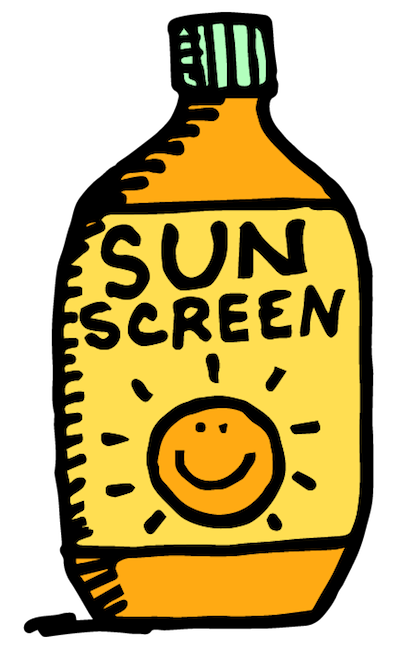 The sun is shining…outdoor play is calling. How can you protect you and your family from the sun’s harsh rays?
The sun is shining…outdoor play is calling. How can you protect you and your family from the sun’s harsh rays?
- Limit time outdoors from 10am-2pm as this is when the sun’s rays are strongest
- Protect your skin by keeping it covered and by wearing a hat with a wide brim. Protect your eyes by wearing sunglasses
- Apply sunscreen…and reapply sunscreen!
How do you choose a sunscreen/sunblock?
The sun emits different types of rays that reach the surface of the earth, UVA & UVB. UVB rays are shorter waves that tend to penetrate more deeply and tends to cause sunburns. UVA rays have been associated with skin cancer and early skin aging.
“Broad-spectrum” sunscreen is the ideal choice since it has UVA and UVB coverage. Its uses a chemical block, such as avobenzone, to prevent the harmful UVA and UVB rays from reaching the skin.
Sunblock usually only has UVB coverage. It tends to be thicker and more opaque because it is a physical block, often titanium dioxide or zinc oxide (think of the life guard with the thick white stuff on his nose). These physical blocks prevent the rays from being absorbed by the skin. Sunblock tends to be better for sensitive skin and generally needs to be reapplied less frequently.
What is SPF?
SPF stands for “sun protection factor.” It identifies the degree to which a sunscreen can prevent a sunburn. You should choose a sunscreen a minimum SPF 30, meaning it blocks out at least 97% of UV rays. There is no evidence that shows anything above SPF 50 offers more protection.
When shopping for sunscreen remember these things:
- Choose one that is labeled as being “broad spectrum”
- Minimum SPF 30
- Water-resistant (although remember to reapply after swimming/sweating)
- Opt for a lotion over the spray
https://www.healthychildren.org/English/safety-prevention/at-play/Pages/Sun-Safety.aspx

